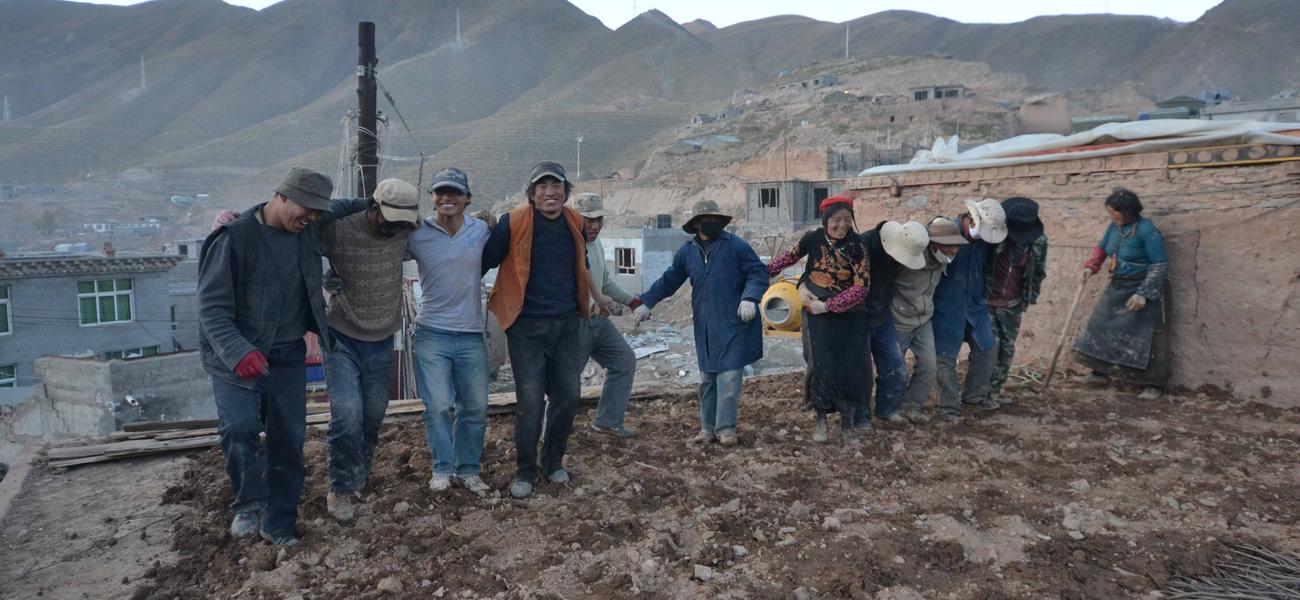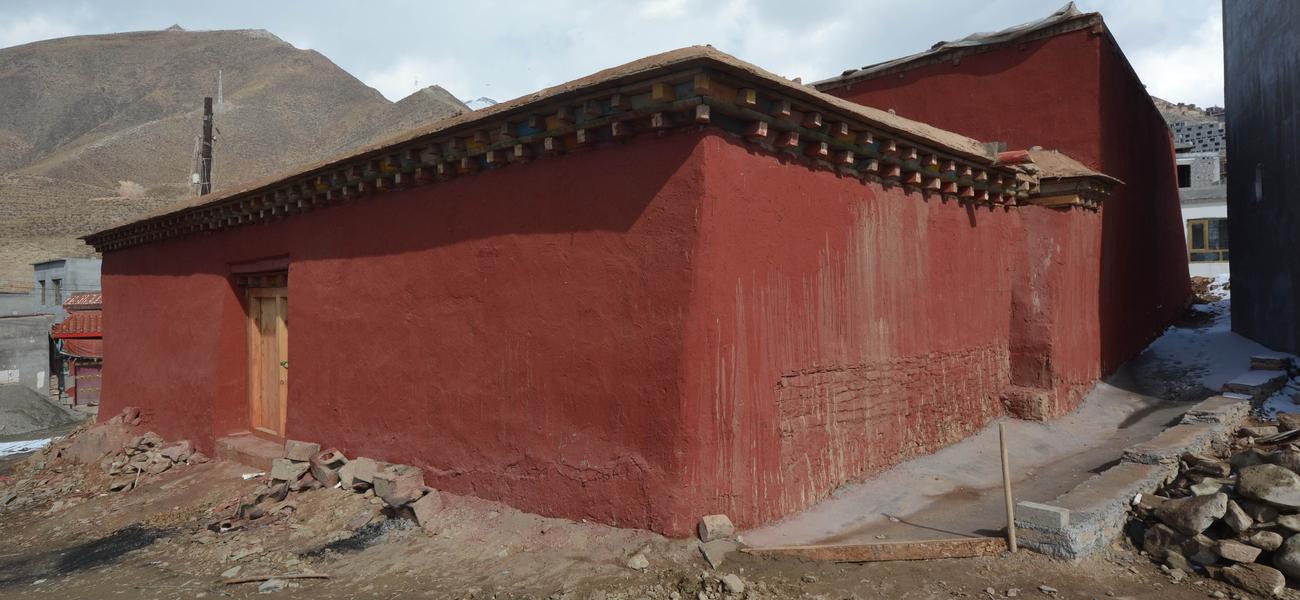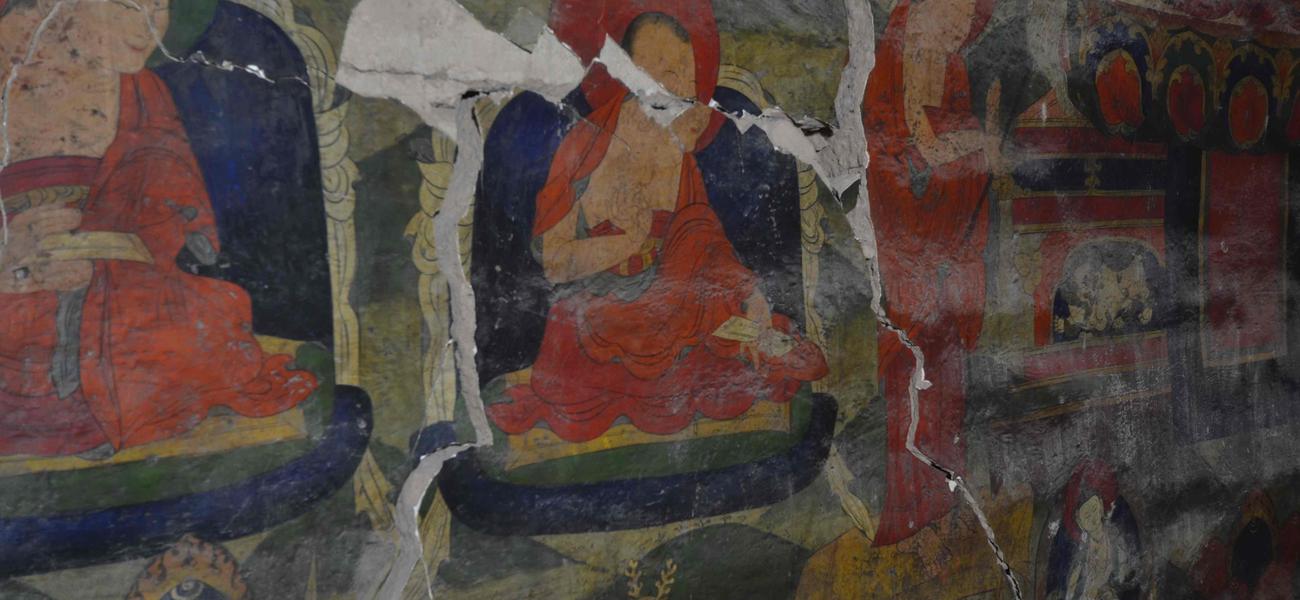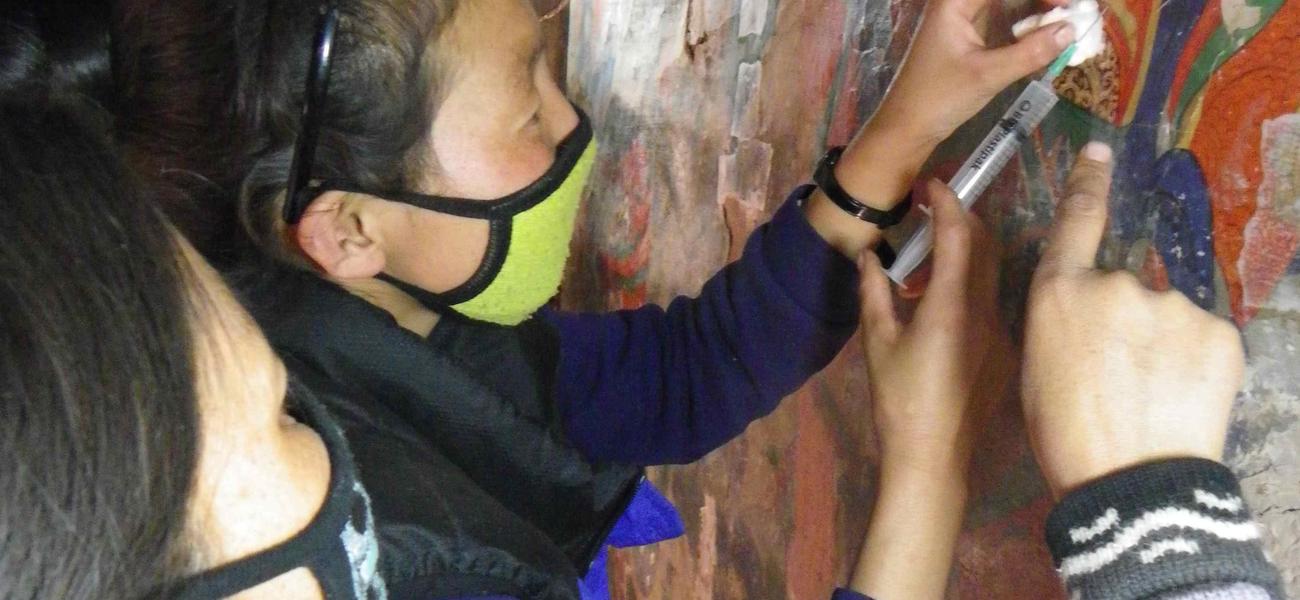Under a boundless blue sky and nestled among magnificent snowy mountains, the monks who circumambulate the red earth walls of a centuries-old temple look like just tiny dots. Some spin prayer wheels, some chant, others count prayer beads, but all move in a clockwise motion. Their meditative exercise, named kora, is meant to calm the mind.
The temple they circumambulate, Kartsog Lhakhang, is the only religious building in the Jyekundo area to emerge from the Cultural Revolution unscathed. For that reason, it has become a religious and social gathering place for the residents of the old town. Known for its historic nineteenth-century murals, it is where local Tibetans celebrate the New Year festival, as well as other important days of the Tibetan calendar.
And that’s why, when a devastating earthquake struck Yülshul Tibetan Autonomous Prefecture in April 2010, leaving the area in ruins and damaging the temple, we were committed to restoring this important link to the community’s past. In the wake of plans to transform the town into a tourist destination and to replace 90 percent of all buildings with uniform concrete structures, we wanted the restored temple to live on as an anchor to the old residential town.
In 2011, Trace Foundation awarded Tibet Heritage Fund a grant to support this work, to raise local awareness about heritage preservation while reviving traditional building skills. Now we are delighted to share selections from the Tibet Heritage Fund’s field report:
Instantly after the earthquake, the government issued plans for the reconstruction of the entire town. A new land use map was introduced for this purpose. Many households were relocated according to the new designated use of the land. The residents were not allowed to undertake any repair on their homes. The official reconstruction plan intended to replace all former homes with uniformly designed concrete-frame buildings. Regardless of the degree of damage, about 90 percent of all buildings were then demolished by bulldozers. There was no damage assessment. The demolition work lasted until this spring, leaving the town unrecognizable.
Kartsog Lhakhang is the oldest and most important Buddhist temple in Yushu town. Its exact origins are unknown, but a small temple on this site dates back to the founding of Jyekundo (Yushu) town by Sakya Pandita in the thirteenth century. The present temple took its shape in the eighteenth century. Located in the heart of the historic town, it is the local community’s neighborhood temple, the most important place in their daily life. It is also used for fasting practice (Tibetan: nyungney), hence the name Kartsog Lhakhang, “temple of the white [pure] assembly.”
During the Cultural Revolution, Yülshul was hit particularly hard. The town’s main monastery, Jyegu Gonpa, was completely destroyed, along with the palace of the ninth Panchen Lama and other important historic sites. However, a local lama managed to save Kartsog Lhakhang. After the end of the Cultural Revolution, Kartsog Lhakhang’s importance increased as it was the only temple that had survived, and the only one with historic wall paintings.
During the Yülshul earthquake, the temple was badly shaken but did not collapse. The massive earth walls were still standing. After the earthquake, Tibet Heritage Fund concluded that the historic building, along with the historic paintings, could be saved. Based on our long experience with Tibetan rammed-earth walls, we designed an intervention plan that would reinforce the historic rammed-earth walls with new ties to hold the building together so that it could continue to withstand tremors. Because the wall paintings had been severely damaged, we worked with French mural restorers to consolidate the paintings first, before any work could be done.
Rammed earth is an ancient building technique that uses natural materials like earth, gravel, lime, chalk, and clay to construct walls. Although the walls can be labor intensive to construct, they’re known for the durability, sustainability, solidness, thermal mass, and noncombustibility. And because natural materials are so widely available, rammed-earth walls are also relatively inexpensive.
The temple is decorated with historic wall paintings in the entry and in the main hall. In the entry, there are depictions of the Four Heavenly Kings; in the hall, a mural of Sangye Monlam, surrounded by thirty-seven gods, on the right, and one of Sakyamuni, surrounded by the sixteen Arhats, on the left. The paintings were made with natural pigments and animal glue binder on earthen plaster and rammed-earth walls. Before the earthquake, the paint in the entry was already damaged and needed restoration work. After the earthquake, the need for conservation work increased drastically.
One square meter of painted surface had fallen to the floor after the earthquake impact. The pieces were collected, stocked in boxes, and when possible, refitted on the wall. We found that 50 percent of the plaster was detached. To stabilize the paint layers again was the most urgent work. The team chose natural earthen grouting, which was injected between the plaster and the wall. The cracks were then filled with a material based on the original plaster consistency. Finally, the paintings were cleaned.
The structural work began with the removal of the entire outside plaster to reveal hidden cracks in the rammed earth walls. Deep cracks were then bridged with wooden tie beams, a method developed by Tibet Heritage Fund after a UNESCO workshop on rammed earth conservation in Ladakh in 2006. Smaller cracks were filled in with local stone, a method Tibetans have been using for centuries. The roof was opened—the soil layers were removed and the timber structure dismantled. We found that only 50 percent of the roof timber elements could be reused. After removal of the weight, the bent columns and beams could be successfully straightened, to re-create the original structural balance. The new roof timber system was improved by using better quality timber.
In the interior, new windows and walls in the entry were removed, and the modern metal door replaced with a traditional wooden gate. Finally, the building was replastered and painted red again.
Restoration on the Kartsog Lhakhang, completed in October 2011 through the support of Trace Foundation and Prince Claus Fund in the Netherlands, was a collaborative effort among French restorer Melodie Bonnat, the late Tibet Heritage Fund Director André Alexander, two French restorers, one German restorer, and two Tibetan students, as well as local carpenters and artisans.
Historic site preservation is one way Trace Foundation works to reinforce the uniqueness of Tibetan culture and places. We are proud to have played a part in The Tibet Heritage Fund’s substantive restoration, which is now paving the way for monks and the local religious community to maintain this and other cultural treasures like it.




